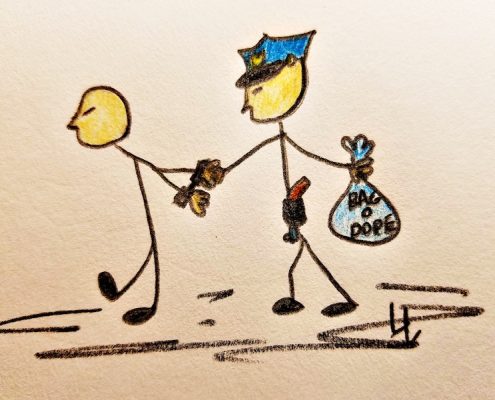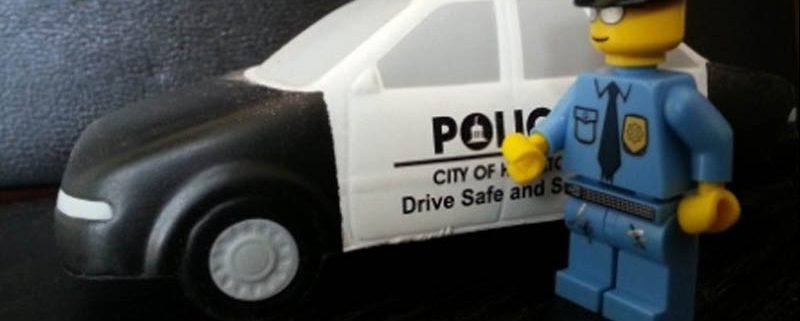Think you have your police procedure correct? No mistakes? Well, here are 17 Facts About Police, Evidence, and Equipment. Let’s test the knowledge of your protagonists, starting with …
1. Revolvers do not eject spent brass with each pull of the trigger. Semi- and fully-automatic firearms, however, do eject spent brass.
2. Handcuffs are equipped with two locks. The first is the automatic lock that connects when the pawl hooks to the ratchet. This allows the officer to apply cuffs to the wrists of combative suspects without having to fumble around while trying to locate a lock, insert a key, etc., while the bad guy is throwing punches to the officer’s nose and jaw.
The second lock (double-lock), a button inset, is found on the underside of the body of the cuff near where the end of the ratchet exits the cuff body.
3. Speed Loaders https://leelofland.com/dump-pouches-v-speed-loaders/
4. Vehicles rarely, if ever, explode when hit by gunfire.
5. DNA evidence is NOT used to convict defendants in every criminal case.
DNA Facts:
Identical twins have identical DNA.
Humans are genetically 99.9% identical. Only 0.1% of our genetic makeup is different.
It takes about eight hours for one cell to copy its own DNA.
Red blood cells do not contain DNA.
DNA is used to determine pedigree in livestock.
DNA is used to authenticate wine and caviar.
Detergent and Alcohol will not destroy DNA.
DNA can be transferred from article of clothing to another, even in a washing machine. This is called secondary and tertiary transfer.
DNA testing is not 100% accurate.
6. The FBI does not take over cases from local police. They do not have that authority. Besides, they have their own cases to work, which do not include local murder cases. Those cases are worked by local police.
7. Kevlar vests worn by patrol officers (or similar types) are not designed to stop punctures from knives and other sharp objects. There are, however, other types of vests designed for those purposes, such as the vests worn by corrections officers working in jails and prisons.

8. Cops are not required to advise a suspect of Miranda (you have the right to … etc.) the moment they arrest someone. Instead, Miranda is advised only when suspects are in custody AND prior to questioning. No questioning = no advisement of Miranda. Some departments may have policies that require Miranda advisement at the time of arrest but it not required by law.
9. Police officers are not required by law (in every state) to wear seat belts while operating a police car. In fact, some state laws also allow certain delivery drivers to skip buckling up (USPS letter carriers, for example).
10. Not all deputy sheriffs are sworn police officers. For example, most deputies who work in the jails are not police officers.
11. Some California sheriffs also serve as county coroner. However, they are not medical doctors. They employ pathologists who perform autopsies.
12. Small town police departments investigate murder cases that occur within their jurisdictions. Not the FBI or Jessica Fletcher. If they need additional resources they reach out to the local sheriff’s office or state police. Again, this is not the job of the FBI. Sure, if they’re needed they’ll assist.
All police officers are trained to investigate crime, and small town officers investigate homicides all the time.
13. Robbery and burglary are not synonymous.
Many people confuse the terms robbery and burglary. I see the misuse of those two terms everywhere, including in books written by some of my favorite authors. I also hear the terms interchanged on TV and radio news. They are not the same, not even close.
Robbery occurs when a crook uses physical force, threat, or intimidation to steal someone’s property. If the robber uses a weapon the crime becomes armed robbery, or aggravated robbery, depending on local law. There is always a victim present during a robbery.
For example, you are walking down the street and a guy brandishes a handgun and demands your money. That’s robbery.
Burglary is an unlawful entry into any building with the intent to commit a crime. Normally, there is no one inside the building when a burglary occurs. No physical breaking and entering is required to commit a burglary. A simple trespass through an open door or window and the theft of an item or items is all that’s necessary to meet the requirements to be charged with burglary.
For example, you are out for the night and someone breaks into your home and steals your television. That’s a burglary. Even if you are at home asleep in your bed when the same crime occurs, it’s a burglary because you weren’t actually threatened by anyone.
14. Narcotics dogs are NOT fed drugs of any type during their training. Never. Not ever. NO. No. And NO!
15. Shotguns and rifles are not not synonymous.
16. Police officers are NEVER trained to “shoot to kill.” Instead, they’re taught to stop the threat. When the threat no longer exists the shooting stops, if it ever starts. Often, the threat ceases before shots are fired.
17. Cops are not trained to aim for arms, legs, and/or to shoot a knife or gun from a suspect’s hand.
Instead, officers are taught to shoot center mass of their target. It is extremely difficult to hit small, moving targets while under duress. Again, officers DO NOT shoot hands, legs, elbows, or weapons (well, not on purpose).
*Click the highlighted links above for additional information.



